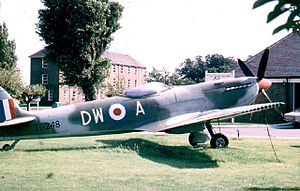
Royal Air Force Kenley, more commonly known as RAF Kenley is a former airfield station of the Royal Flying Corps in the First World War and the RAF in the Second World War. It played a significant role during the Battle of Britain as one of the three RAF stations specifically tasked with the defence of London. It is located near Kenley on the edge of Greater London. The site remains in use with the Ministry of Defence, as Kenley Airfield.

Royal Air Force Brize Norton or RAF Brize Norton in Oxfordshire, about 75 mi (121 km) west north-west of London, is the largest station of the Royal Air Force. It is close to the village of Brize Norton, and the towns of Carterton and Witney.

Royal Air Force Digby otherwise known as RAF Digby is a Royal Air Force station located near Scopwick and 11.6 mi (18.7 km) south east of Lincoln, in Lincolnshire, England. The station is home to the tri-service Joint Service Signals Organisation, part of the Joint Forces Intelligence Group of Joint Forces Command. Other units include the RAF Aerial Erector School, No. 54 Signals Unit and No. 591 Signals Unit.

Royal Air Force Barkston Heath or RAF Barkston Heath is a Royal Air Force Relief Landing Ground under the command of RAF Cranwell near Grantham, Lincolnshire, England.
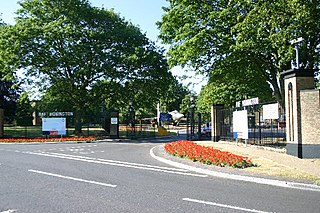
Royal Air Force Honington or more simply RAF Honington is a Royal Air Force station located 6 mi (9.7 km) south of Thetford near Ixworth in Suffolk, England. It was used as a bomber station during the Second World War and through the Cold War, hosting Handley Page Victors and Hawker Siddeley (Blackburn) Buccaneers. RAF Honington has been the RAF Regiment depot since 1994.

Royal Air Force Chivenor, or more simply RAF Chivenor, was a Royal Air Force station located on the northern shore of the River Taw estuary, on the north coast of Devon, England. The nearest towns are Barnstaple and Braunton.

Royal Air Force Shawbury, otherwise known as RAF Shawbury, is a Royal Air Force station near the village of Shawbury in Shropshire in the West Midlands of England.

Royal Air Force Syerston, commonly known simply as RAF Syerston, is a Royal Air Force station in the parish of Flintham, near Newark, Nottinghamshire, England. Opened in 1940, it was used by the Royal Air Force (RAF) as a bomber base during the Second World War, operating Vickers Wellingtons, Avro Manchesters, and the Avro Lancaster heavy bombers. Post-war, it became home to Jet Provosts of the 2 Flying Training School. It is now home to the Royal Air Force Central Gliding School.

Royal Air Force Tern Hill, or more simply RAF Tern Hill, was a Royal Air Force station at Ternhill in Shropshire, England, near the towns of Newport and Market Drayton.

Number 19 Squadron is a squadron of the Royal Air Force. It was the first squadron to operate the Supermarine Spitfire. It currently operates the UK's Control and Reporting Centre from RAF Boulmer. No. 19 Squadron delivers persistent surveillance of UK airspace, and Tactical Control of RAF and NATO aircraft, including the UK's contribution to NATO's Quick Reaction Alert mission.
Royal Air Force Montrose or more simply RAF Montrose is a former Royal Air Force station in Forfarshire in Scotland. It became the first operational military aerodrome to be established in the United Kingdom on 26 February 1913.

Royal Air Force Atcham, or more simply RAF Atcham, is a former Royal Air Force station located 5 miles (8 km) east of Shrewsbury, Shropshire, England, on the north eastern boundary of Attingham Park.

The Defence Aviation Repair Agency, better known as DARA, was an executive agency of the United Kingdom Ministry of Defence, responsible for the maintenance and repair of Royal Air Force, Army and the Royal Navy's aircraft. It became part of the Defence Support Group from 1 April 2008. Part of the Defence Support Group (DSG) was sold to Babcock on 31 March 2015 while the remainder became the Defence Electronics and Components Agency (DECA) on 1 April 2015.
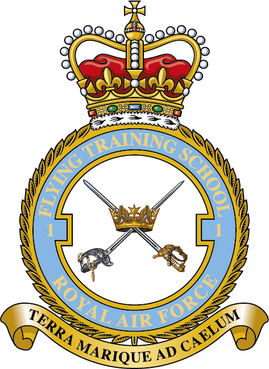
The No. 1 Flying Training School is the oldest military pilot training school in the world, currently used to deliver rotary training to aircrew of the British armed forces.

The Defence Support Group (DSG) was an executive agency and wholly owned trading fund of the Ministry of Defence in the United Kingdom. It was established on 1 April 2008 by the merger of the Defence Aviation Repair Agency and the Army Base Repair Organisation. It was created under The Defence Support Group Trading Fund Order 2008. Part of the group was sold to Babcock International on 31 March 2015, while the remainder became the Defence Electronics and Components Agency (DECA) on 1 April 2015.

Air Marshal Clifford Rodney Spink, is a retired senior Royal Air Force officer, who is now a Spitfire display pilot on the national air display circuit. The first Spitfire he ever flew belonged to the Battle of Britain Memorial Flight, during his tenure as Station Commander of RAF Coningsby. He also served as the 23rd Commandant of the Royal Observer Corps, the last but one officer to hold the post.

Royal Air Force Wrexham, or more simply RAF Wrexham, is a former Royal Air Force station at Borras, on the outskirts of Wrexham, Wales and north-east of the city centre.
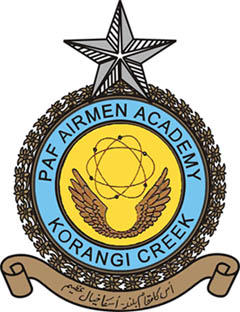
Pakistan Air Force Airmen Academy Korangi Creek is "Home of Airmen". It was PAF Base which imparts only technical training to Aero Apprentices and training of non-technical trades was going on another PAF Bases, so PAF needed to train all Airmen at one place. In 2019, It was established as an Academy in which training of all trades is planned. It was a momentous occasion in the history of Pakistan Air Force, as the Air Chief laid the foundation stone of PAF Airmen Academy at PAF Base Korangi Creek Monday.
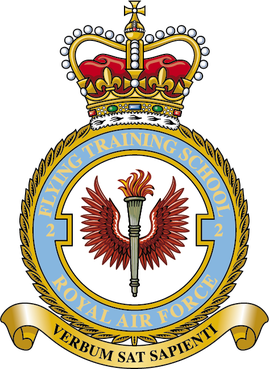
No.2 Flying Training School is a Flying Training School (FTS) of the Royal Air Force (RAF). It is part of No. 22 (Training) Group that delivers glider flying training to the Royal Air Force Air Cadets. Its headquarters is located at RAF Syerston in Nottinghamshire and gliding takes places from several sites throughout the UK using the Grob Viking T1. The RAF Central Gliding School is also under its command.

The Defence Electronics and Components Agency (DECA) is an executive agency sponsored by the United Kingdom's Ministry of Defence. The agency was formed in April 2015 from the air division of the Defence Support Group, which was retained when the rest of the group was sold to Babcock International.
